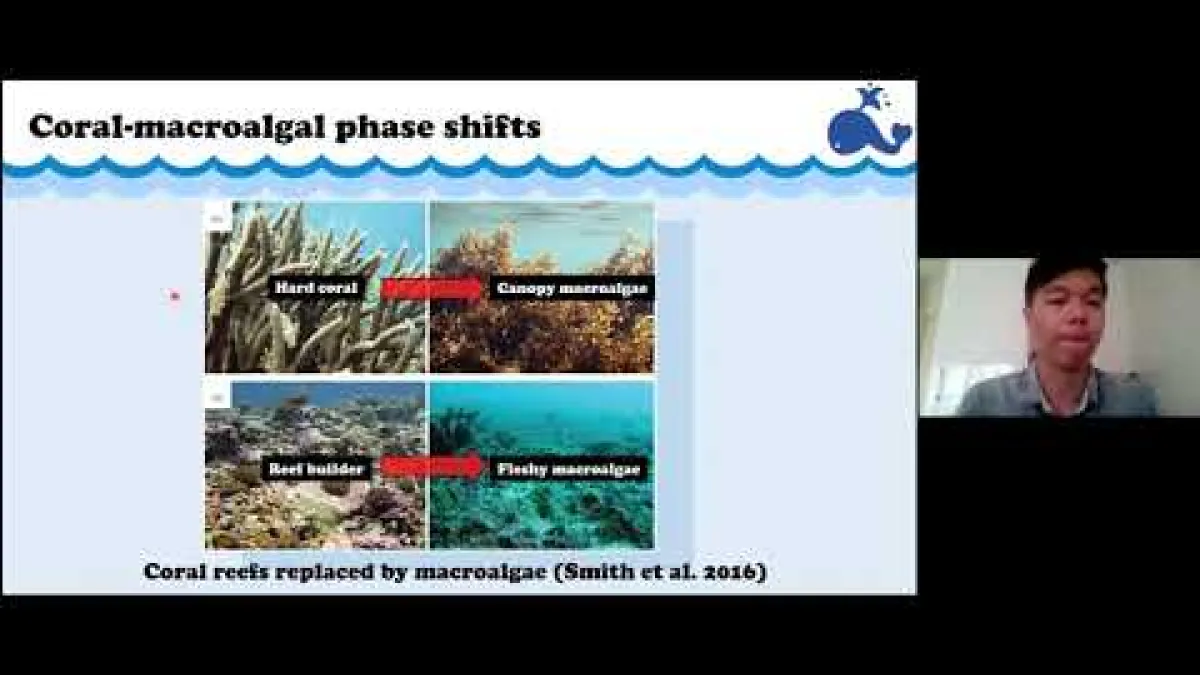E&E PhD Exit Webinar: Get high with your weed: lessons from a tropical ‘seaweed-invertebrate-fish’ food chain
Canopy-forming seaweeds, generally brown macroalgae, are worldwide dominant primary producers and habitat constructors in our marine environments.
Speakers
Event series
Content navigation
Description

Canopy-forming seaweeds, generally brown macroalgae, are worldwide dominant primary producers and habitat constructors in our marine environments. In tropical regions, macroalgae have been much maligned in terms of their negative competitive interactions with corals. However, macroalgal habitats are themselves extremely valuable. They provide food, shelter and nurseries for associated invertebrates and fishes, including economically-important fishery species, thereby supporting high biodiversity and with the potential to drive production of biomass. However, compared to other marine habitats such as coral reefs and mangroves, our understanding of the productivity and ecosystem functioning of macroalgal meadows is much more limited. Using field data collected from meadows of the brown macroalga Sargassum in Ningaloo Marine Park, Western Australia, my PhD examined key aspects of the way in which these habitats function including: (1) the role of epifaunal invertebrates as links in the food chain between primary producers (macroalgae) and secondary consumers (fishes); (2) the effect of seasonal fluctuations in macroalgal canopy structure on epifaunal production and the implications of changes in meadow coverage that could occur under conditions of ocean warming; and (3) the foraging impacts of key secondary consumers of epifaunal biomass associated with these macroalgal habitats (the invertivorous fish species). In this seminar I will share some of my research findings on these aspects of ecosystem functioning, in particular: (1) the need for a unifying framework for the study of epifaunal communities within marine habitats; (2) the link between epifauna and their predators and the potential for foraging microhabitat preferences to reveal niche partitioning and functional complementarity among invertivorous fishes; and (3) the quantification of energy flows across the ‘seaweed-invertebrate-fish’ food chain in Ningaloo, and what we can learn from this particular example that can improve the management of our tropical marine ecosystems.
Location
Please click the link below to join the webinar:
https://anu.zoom.us/j/89191724804?pwd=c2FGWUhCdTJyM2R6WEVzSEsyU2lEUT09
Passcode: 574961
Canberra time: please check your local time & date if you are watching from elsewhere.

